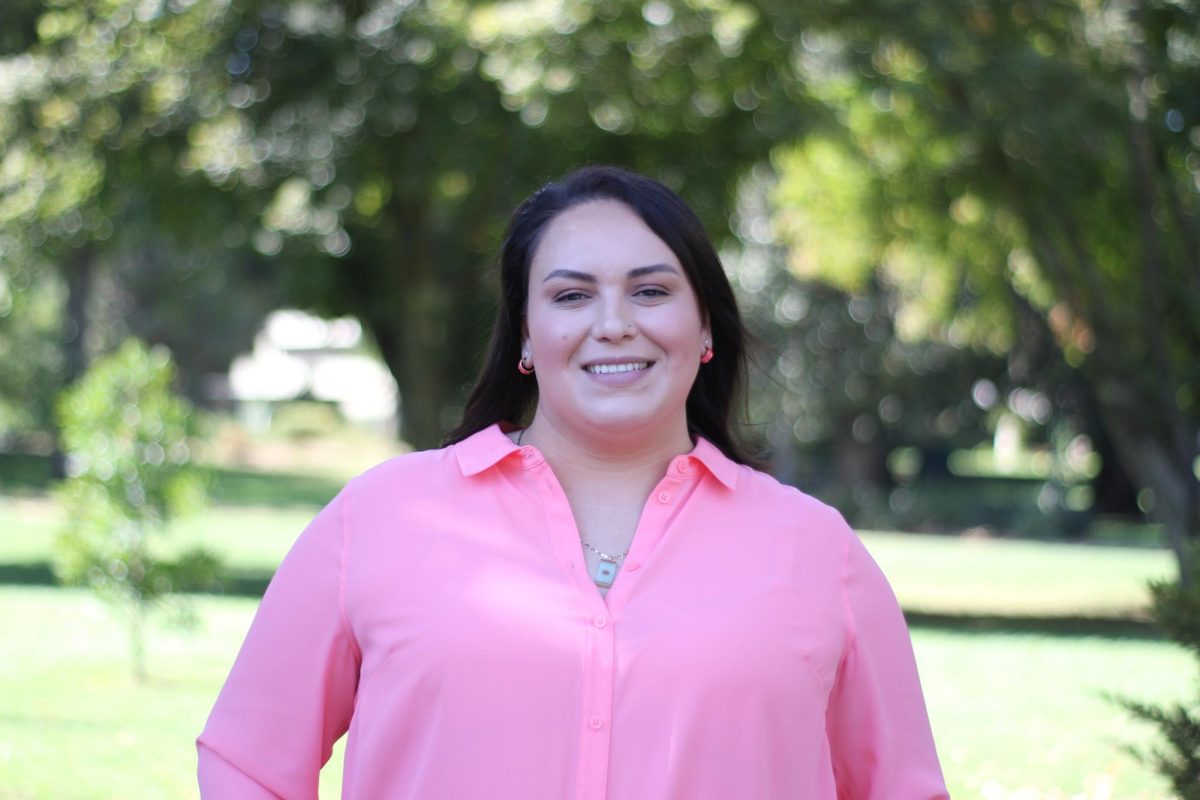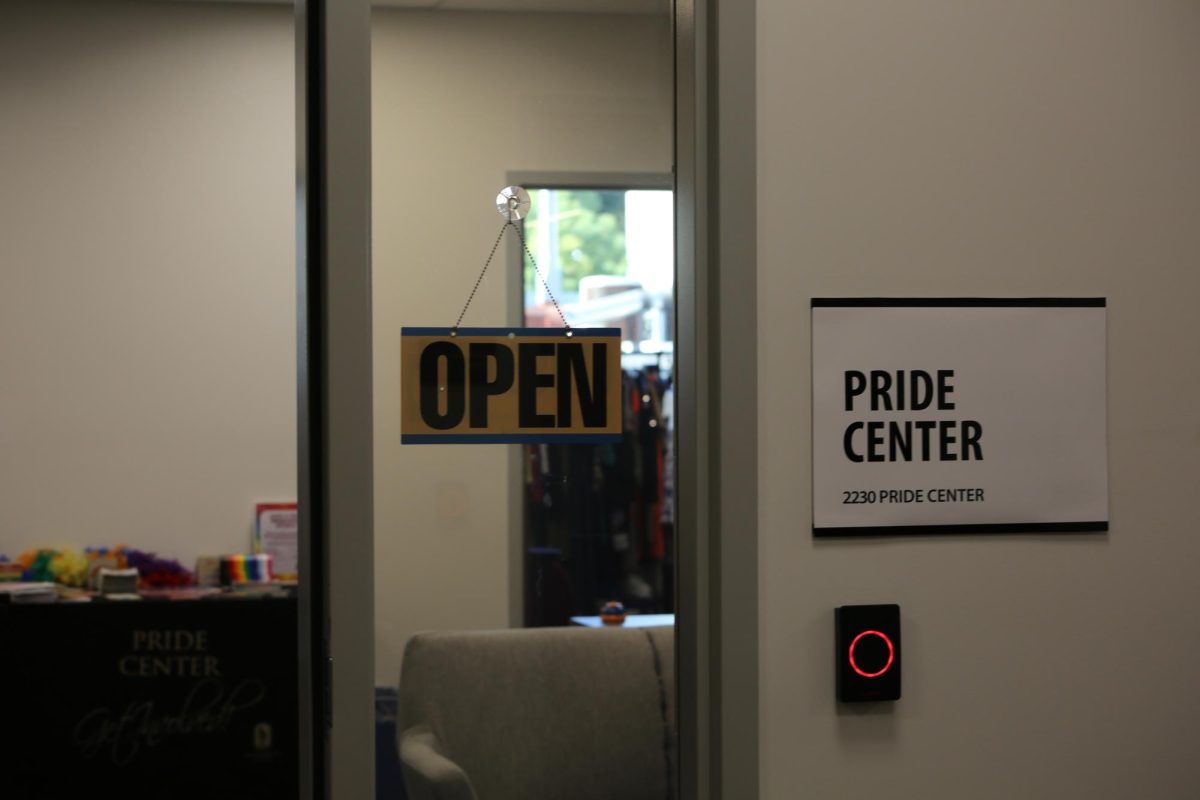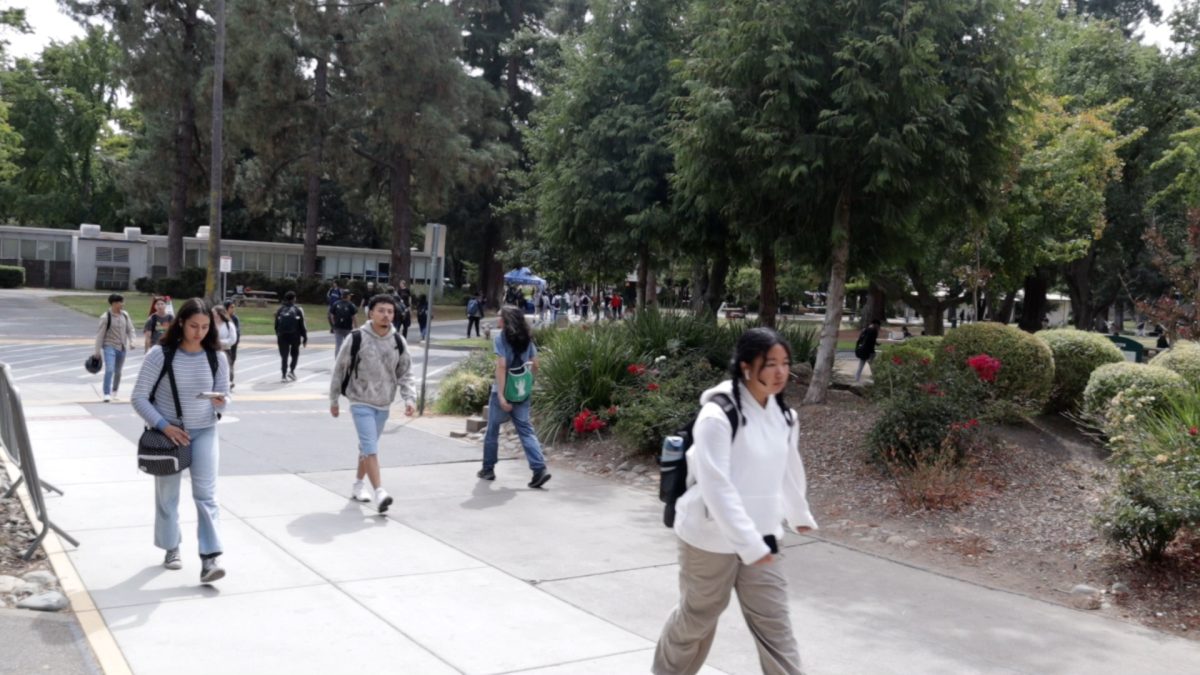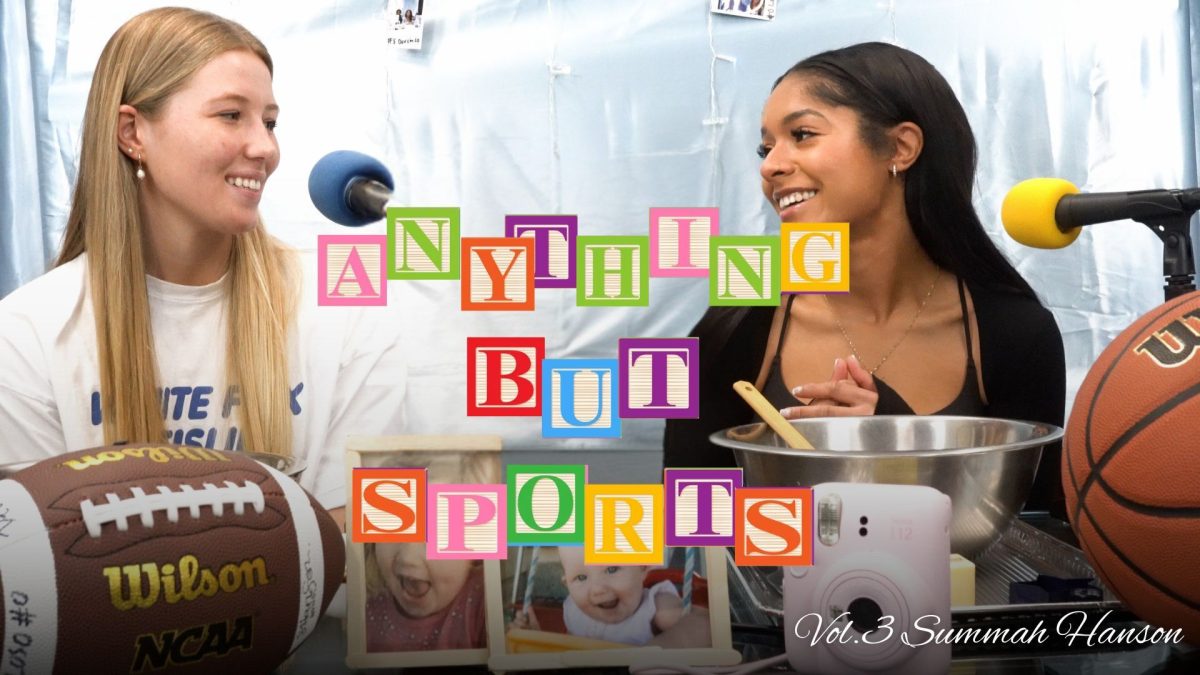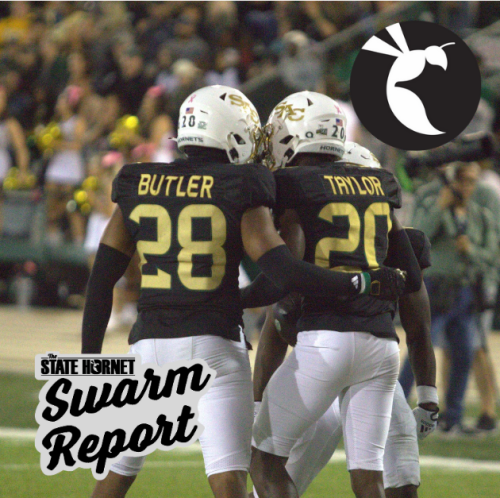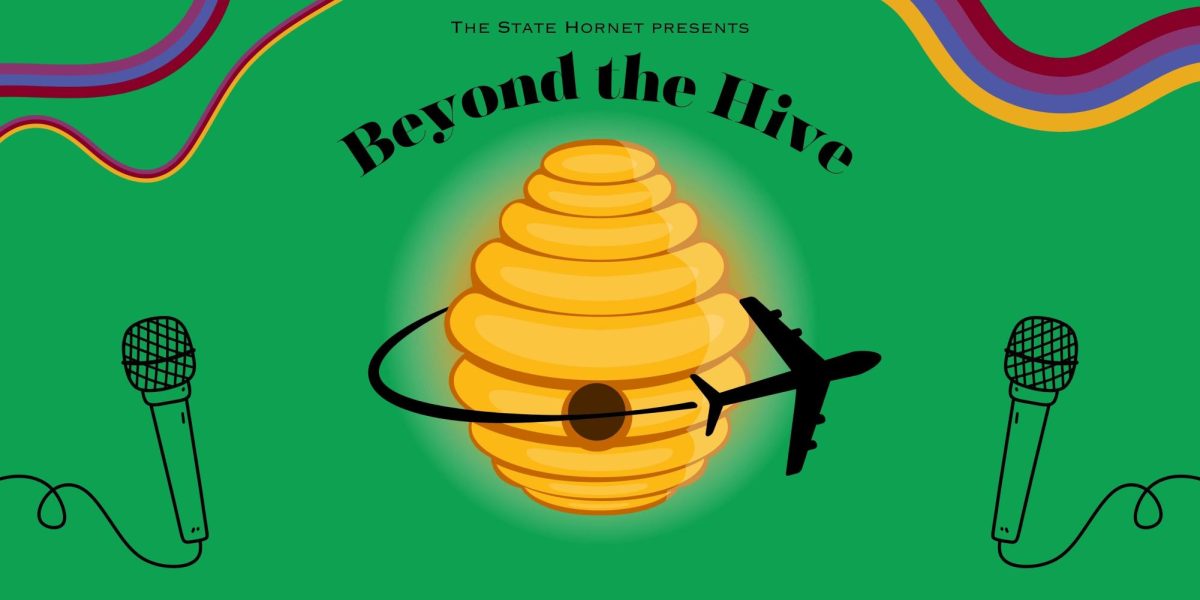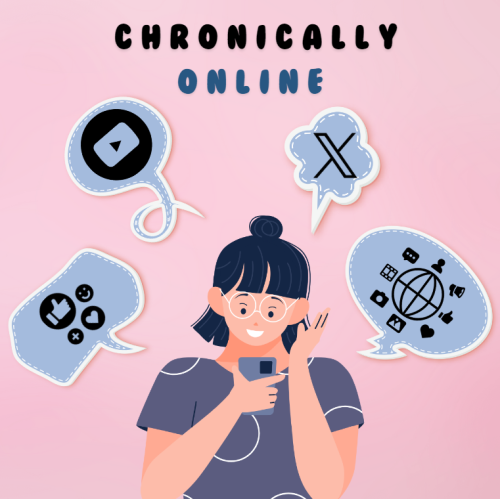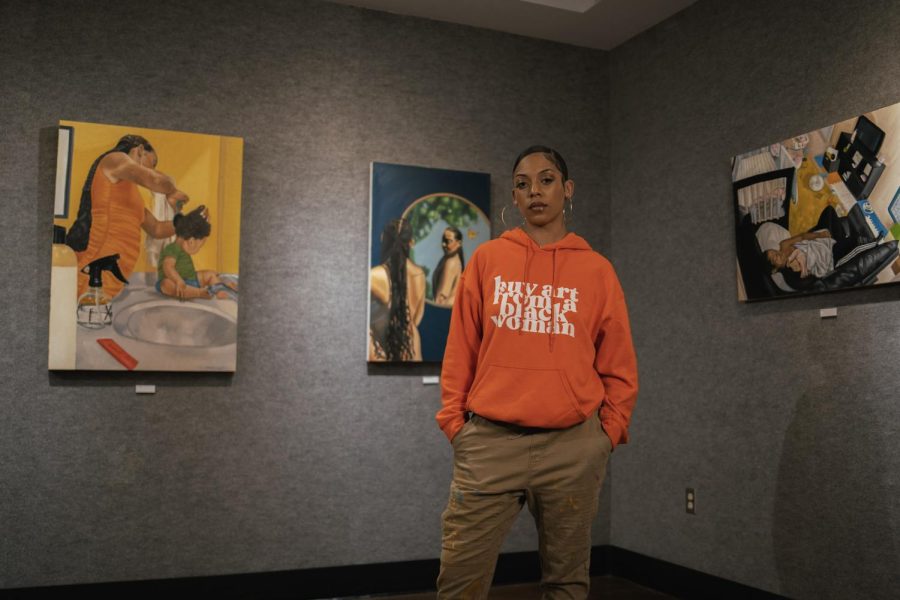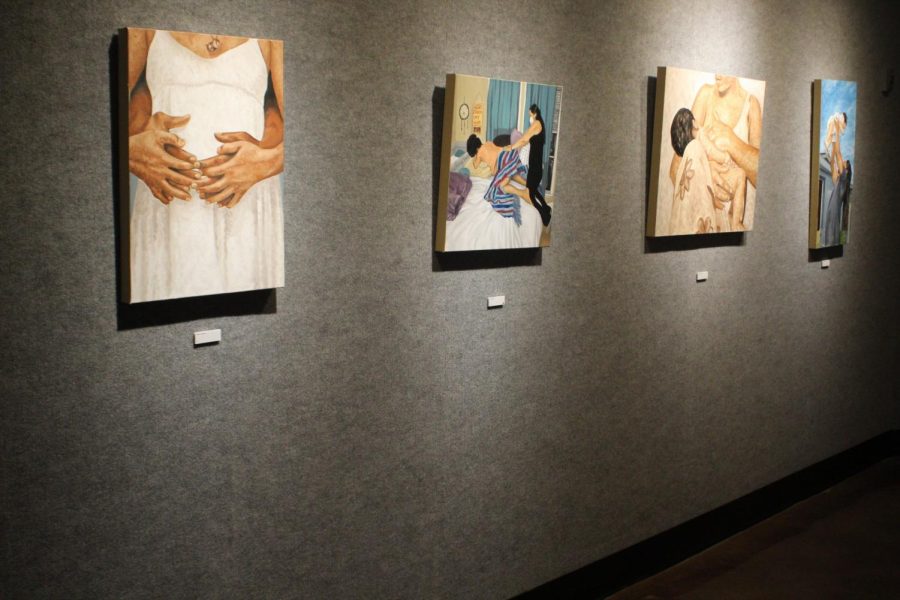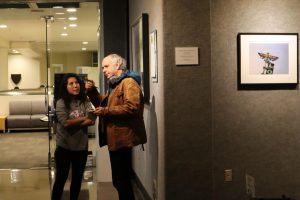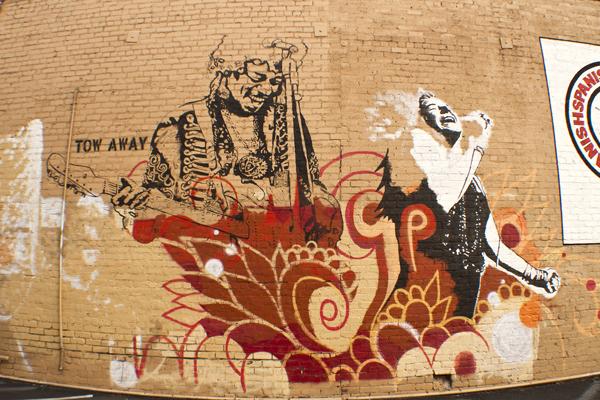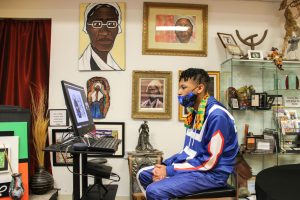Aliyah Sidqe’s visual and audio journey into single motherhood
Award winning muralist and painter brings her work to Union gallery through Feb. 17
Painter Aliyah Sidqe stands before “Baby Hairs,” “Assessing the Damages” and “Motherly Love” at “the Babymama Effect” exhibit in the Union Gallery at Sac State on Jan. 24. An audio file narrated by Sidqe explains the story behind the pieces features in the exhibit. Photo courtesy of Aliyah Sidqe.
February 15, 2022
Whether at Washington Elementary School, behind Grocery Outlet on Del Paso or at the Roberts Family Development Center, Aliyah Sidqe’s artistic prowess has been on display in numerous settings.
In murals throughout Sacramento, Sidqe has depicted themes ranging from a family breaking bread to a young girl wishing on a dandelion. In her work, Sidqe said she wanted to pay tribute to her Black roots.
Through Feb. 17, the University Union gallery will host Sidqe’s exhibit “The Babymama Effect.” According to Sidqe, the name is a nod to the “the butterfly effect” theory, which describes a hypothetical scenario in which tiny displacements of energy caused by a butterfly flapping its wings leads to a natural disaster.
The installation features 14 oil paintings and an audio element that takes visitors through several transformations in Sidqe’s life.
“It is very personal, but it is a lesson not only for myself reliving everything, but also for the audience because it is very relatable,” Sidqe said. “I put all of the pieces in a particular [order to show] how that story played out. In creating the work, I wanted people to really feel it, like they were stepping into my shoes and really dig their teeth into what the story was.”
In recent semesters, exhibitions displayed in the University Union Gallery were limited to submissions from current Sac State students due to many of them having classes online and away from campus, according to Rebecca Voorhees, the gallery manager. Now that classes have resumed on campus, Voorhees said she is excited to feature Sidqe’s work in honor of Black History Month.
“I’ve loved her work,” Voorhees said. “ Aliyah is a prominent Black female artist in the community.”
Rather than an opening reception when ”The Babymama Effect” debuted at the Union Gallery, there will be a closing reception on Feb. 17, according to Voorhees.
“It’s an opportunity to come out and meet the artist,” she said. “Because of campus being totally virtual the first two weeks, we felt like it wasn’t a very good opportunity to have an opening reception, so this is kind of unique.”
By adding a 10 minute audio track as an element to the exhibit, Sidqe said she hoped to personalize the exhibit by narrating a backstory to the timeline in the pieces. The track was recorded at CitySound in Sacramento and features the sounds of birds and gunshots, which connected directly with elements depicted in the work displayed in the gallery.
“Once I thought of that, there was no way that I couldn’t include that,” Sidqe said. “It really took everything to the next level and allowed for a more cinematic feel to the work.”
“[I wanted to] make sure that we give it that attention that it needs and do it the right way,” she said.
Voorhees said Sidqe’s calming voice pairs with her powerful narration to impact her audience.
“You can hear the emotion in her voice and feel the hurt that she went through, the frustration,” Voorhees said. “Then just hear how truly happy she is towards the end of it. You really hear about the lift that she has in her life and how she overcame that.”
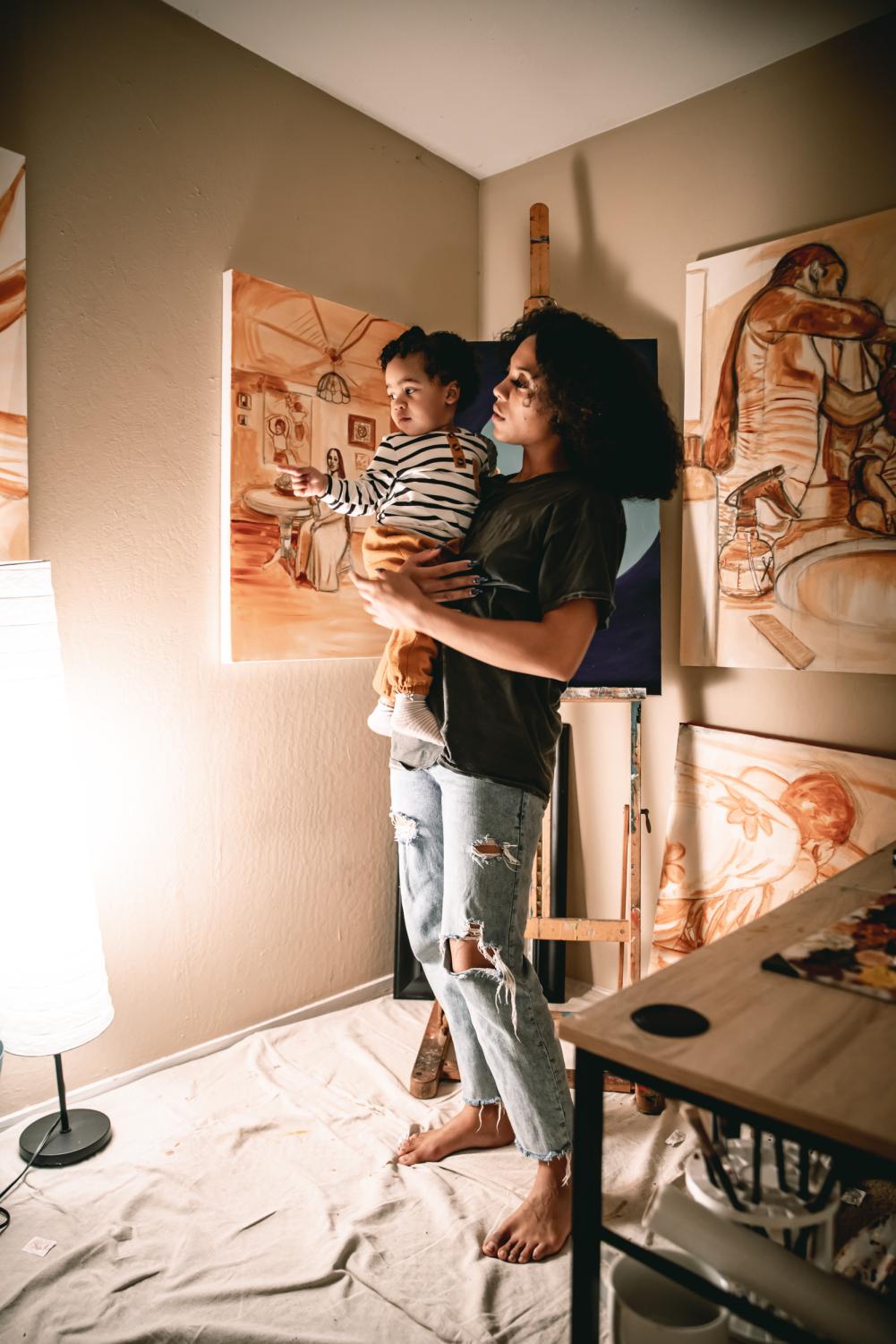
Fellow artist Jalen Tyre’ connected with Sidqe through a Sacramento Black artists’ coalition called the Black Artists Fund in 2020. After crossing paths at events and on social media, the two have collaborated on murals and other projects. Hearing Sidqe’s story and seeing her “in different lenses” in the paintings, Tyre’ said he felt moved to create his own art.
“I love to see her growing right now,” Tyre’ said. “The name [of the exhibition] got me first because I knew it was a play on the butterfly effect. I love that she can paint herself so well because it tells the story even better.”
Though each piece shows moments in Sidqe’s life, one stands out compared to the rest.
In “Coparenting,” Sidqe created a juxtaposition of layered colors,, alluding to the idea of something that isn’t fully formed, according to her. She said that translating the sometimes chaotic idea of coparenting was very difficult. Instead of an image of people, the painting shows a stack of toy blocks in the middle of toppling over.
“I wanted it to be more of a feeling and less realistic,” Sidqe said. “A lot of the pieces are [of] things that actually happened, so I wanted to do something completely different. [Coparenting] is very all over the place and I wanted that to be represented.”
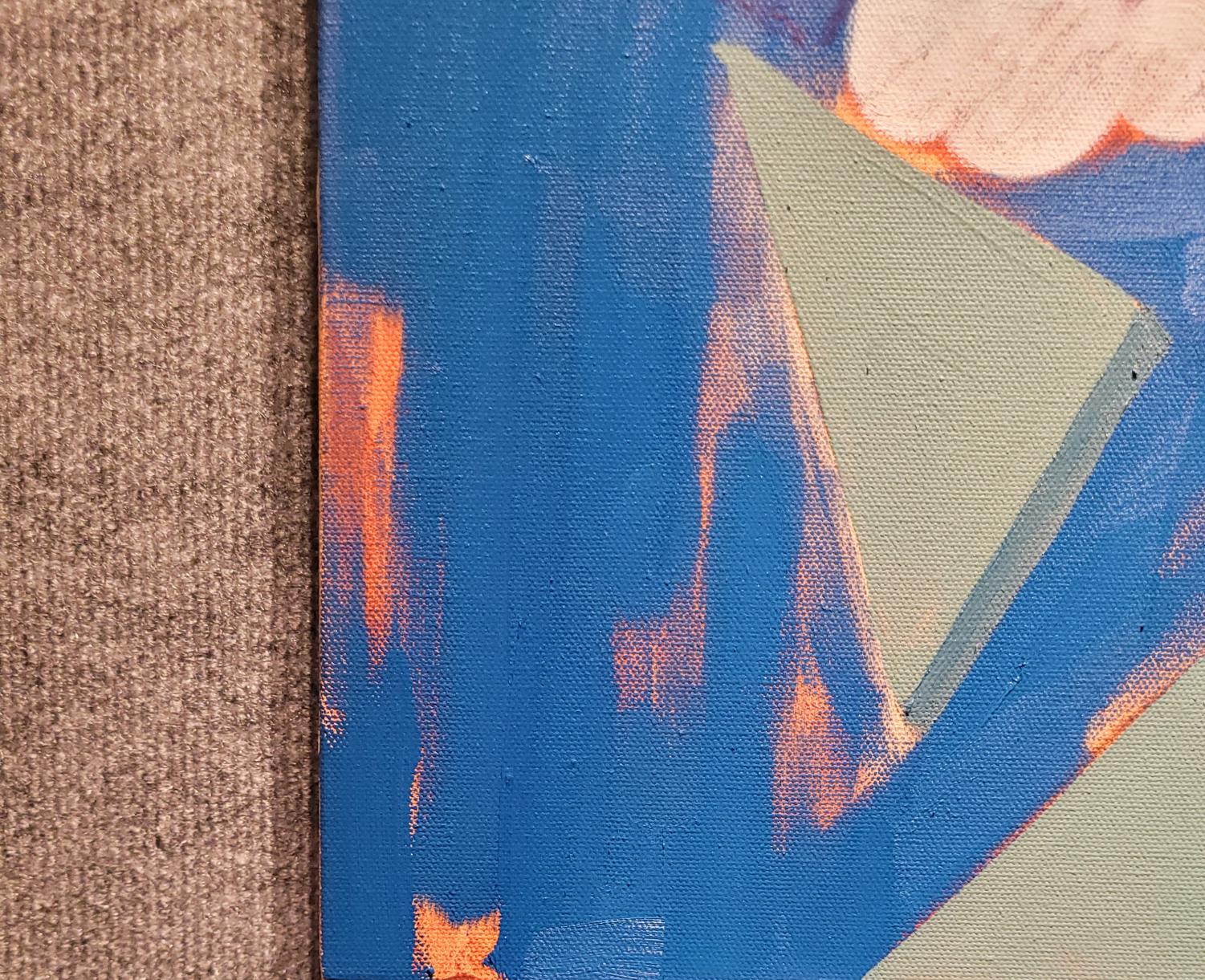
Through “The Babymama Effect,” Sidqe allows herself to be unusually vulnerable as she explores themes more intimate than previous work. She admitted that she is not the kind of person to divulge her personal business publicly but through the exhibit, speaks to those going through similar experiences.
“Every painting that you see are actual photos,” Sidqe said. “I don’t change anything about the [scene], so everything is very real [and] authentic and I love it that way. It feels very close to me that way.”




